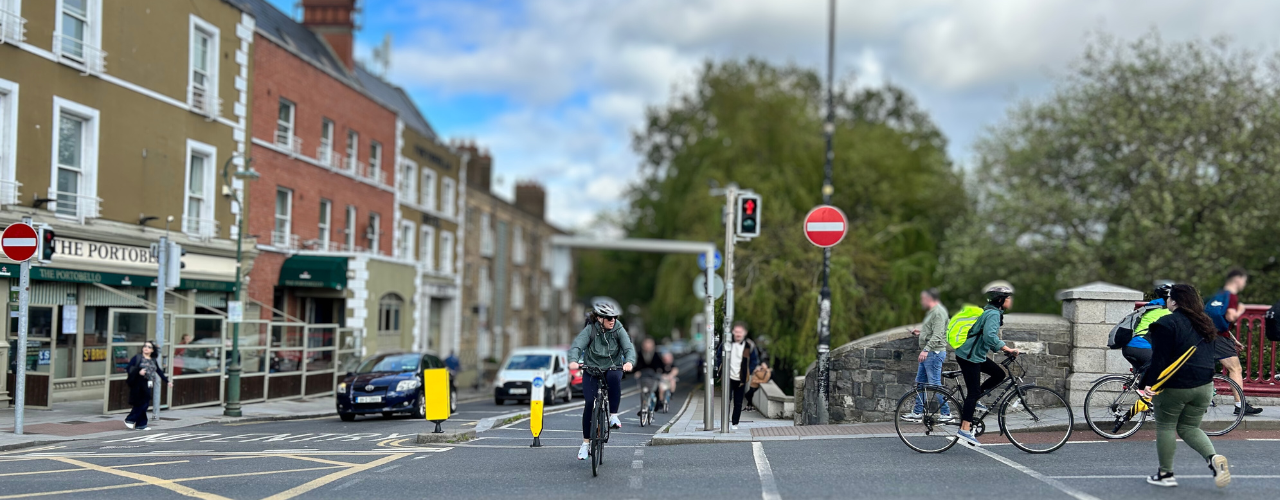
August is commonly known in media circles as silly season, when a story or narrative that would usually merit little attention can become elevated to the level of a national crisis. This summer has featured the ‘lawlessness’ of the north inner-city, tourist advisories from national embassies, and eight-figure budget increases for Garda overtime.
But stories and incidents that should be treated as a national crisis are sidelined or ignored by politicians and national media as there is little political currency or internet traffic to be gained. While people have been seriously injured and harmed on Dublin streets, nobody has been killed. However, in a period of six days from the 15th to 20th of August, five cyclists and pedestrians were killed after being struck by drivers.
A pedestrian in his 80s in Thurles. An eight-year-old boy, cycling with his father, in Carrigaline. A male cyclist in Clare. A 14-year-old female pedestrian in Limerick. A e-scooter rider in Dundalk.
While it is impossible to comment on these cases as the investigations are ongoing, it is clear that five people engaged in active transport can be killed on our roads and there is no resultant clamour for Government intervention. For each death that occurred, many multiples of people are injured and this is unreported. Some forms of violence are more newsworthy than others.
I fear that we, as a nation, are becoming inured to the death of pedestrians and cyclists. Almost 30% of road deaths in Ireland are of pedestrians which ranks us as among the worst in Europe, far above the 8% in Malta and the Netherlands.
It feels like there are echoes of the well-trodden US response to mass shootings in schools to these recent spate of deaths. Mirroring the call of the gun-rights lobby post-Sandy Hook to send children to school with bulletproof backpacks so as not to be future victims; the Road Safety Authority continued with its evidence-free call for pedestrians and cyclists to be visible and adorned in hi-viz (the tweet was hastily deleted). Senior Irish politicans also bring to mind their counterparts’ “thoughts and prayers” response, with condolences but no commitment to any immediate action.
I am currently working on a small research project on the prison sentences handed down by District Courts, so this has involved a lot of reading the court reporting in local papers. With one part of my mind thinking about which offenses lead to custodial sentences—and which don’t— and the other part concerned about the collective meh to increasing road violence, my thoughts went to a weird place. Bear with me for a second here and do not take as planning for a premeditated act. But I wondered what would be the best way to cause harm to a real-life nemesis without the risk of receiving a hefty sanction. It would not be with my fists, a baseball bat or similar weapon, but something in everyday usage by millions: the humble car.
Over the past two years, a number of cases involving injured cyclists and pedestrians have been heard at local District Courts. Here is a small sample. A driver who struck a cyclist with their car, leaving the victim with a fractured femur and a detached retina, received a fine of €350 euro and no driving disqualification. Another driver, who left a cyclist with a spinal fracture and bleed to the brain, was fined €200 and was not disqualified from driving. Knocking a cyclist from a bicycle, leaving them with dental damage, and leaving the scene earned another driver a €250 fine and no driving ban. A lorry driver who hit a cyclist while overtaking received a fine of €250 only. Finally, in this litany of dangerous driving, a motorist who hit a pedestrian in a shopping centre carpark, resulting in leg surgery and serious post-operative complications, was fined €750 and received no driving ban. Many of the drivers blamed other factors in court: victim not indicating; low winter sun; cyclists wearing earplugs, pedestrian not wearing hi-viz clothing etc.
While I could cite many familiar examples of women receiving custodial sentences for shoplifting—in some cases for items valued less than €20—where no person was harmed, I want to highlight two cases where prison sentences were issued for ‘verbal abuse.’ In 2021, a man was given a two-month prison sentence under the Public Order Act for been verbally abusive in County Council offices. In July 2023, a two-month prison sentence was issued, alongside other similar offenses, to a man for verbally abusing two Garda. Words can result in time in prison. Many of the young men who have assaulted people in Dublin recently will likely receive custodial sentences in Oberstown or Wheatfield when their cases are heard.
I am not arguing that we need to expand the use of prison in Irish society; in fact I often argue the opposite. But I do think that it is necessary to weigh up the harm caused as we consider sanctions. Causing the death of a pedestrian or cyclist will continue to be treated as manslaughter but the statutory response to careless and dangerous driving resulting in serious injury is not served by meagre fines for motorists who do not even have a driving ban imposed. Lifetime driving disqualifications must be on the menu of available sanctions as a driver who has caused injury has visibly demonstrated an inability to safely operate a motor vehicle.
It appears that being safely ensconced in a vehicle comprised of two tonnes of metal and hurtling into the soft tissue of a human body offers a driver not just physical protection but legal protection too.

